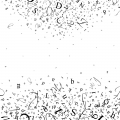Architects spend anywhere from five to ten years studying and perfecting their craft. They are surrounded by different technical systems and words common people outside the field aren’t familiar with nor do they understand it perfectly. So what does an architect do when he has to share an idea with an outsider? How do they manage to get their point across to people that aren’t involved in architecture? The answer is: Through architectural delineation.
To put it simply, architectural delineation focuses on the visual representation of an architectural work. It is important to understand the simple base of this concept since many people believe this art is only about buildings when it can actually extend to many more things.
What exactly is architectural delineation
Like we just said, the term architectural delineation is used to refer to the method architects uses to present their work to potential clients, partners or even just the general public that aren’t involved in the technical part of the process.
Basically, it is through this method that architects are able to bring their design to life and actually show people how the final product would look like once it’s built. Architectural delineation is a very important part of the architectural process, and it’s usually done while on the design phase of the general project.
This method puts a heavy weight on drawings, sometimes made by hand, others made digitally, and focuses on architectural drawings, which is not to be confused with the term architectural detailing, which focuses more on drawing how each small component would assemble together or joined and are not meant to be shown to the general public.
The importance behind architectural delineation
Please note that every part that takes place in the different phases of an architectural project is important and necessary; however, we’re going to focus solely on architectural delineation today and the importance of this practice within any project.
You see; architects often have to create buildings that are both functional, but also aesthetically pleasing, and they have to find a way to make others connect with their design. However, not all architects are designers, nor are they experts in architectural design.
That’s where the importance of architectural delineation begins. This is the method that combines both the artistic part of architectural design, which is a concept that centers around and unifies the different components and elements found in a structured design, the most technical part of architecture.
Without these visual representation, architecture firms, and architects, in general, wouldn’t have a way to showcase their work to their public or sell their idea to the clients. It is through this that architects are able to incorporate a very much needed visual example of how the building is going to look once it is finished.
Of course, architectural design usually takes part during the design phase of the project, and sometimes involves more than just the architect, as a matter of fact; these drawings aren’t always made or designed by the architect themselves, but by artists and graphic designers as well.
Who is responsible for architectural delineation?
Now that we’ve discussed what is architectural delineation and its importance, let’s move on onto more technical matters. Like we just said, architects rarely perform these drawings by themselves, although there is a popular, world competition for Architectural Delineation in which architects compete to see who has the best drawing, but this isn’t always the case.
That being said, architects often work hand-in-hand with either graphic designers, graphic illustrators, artists or companies that focus solemnly on rendering, bringing projects to life through digital or regular drawings.
The reason most architects and architect firms do this is very simple: It takes time and effort off their shoulders, so they can continue to focus on more urgent parts of the project, leaving the drawings and overall presentation to an outsource or third-party, and this is actually very normal.
The process itself is also quite simple as well. Architects will communicate and even illustrate their vision to these artists/illustrators and they will interpret it in a way that connects and resembles the original design the architect has in mind.
These 3D illustrations of the building/house/project it is usually used in different presentations in which the architect explains their vision to future or potential clients, and it’s very likely it will be re-used in various presentations throughout different stages of negotiations.
As to the style or type of drawing, this will depend entirely on the architect and what he is looking for. Of course, illustration companies and artists will have to shape their style to suit the requests made by the client (in this case, the architect).
As we mentioned, there are several different techniques used to achieve the goal of illustrating a building that hasn’t been built yet, so how the drawing/design ultimately looks like will depend on the style chosen for the presentation.
In conclusion, an architectural delineation is a form of art that is related to architect but not limited to, and usually involves more than just a single architect to bring these designs to life. It is also a very important part in any regular architect project, since it is meant to attract and capture the eye of the public, not only to please the architect, but to perform two very important missions: One, convince the client this is a worthy project, Two, get the public invested enough in the project that they want to be involved in it or be excited enough to wait for it or better yet, pre-purchase space.
Russell Thomas is the Founder and Creative Director at 3DAllusions Studio a subsidiary of 3DAllusions LLC which includes sites such as 3DAllusions and MrMaterials which are resources for the CG artist, helping them hone their craft.





























No Comments
Leave a comment Cancel